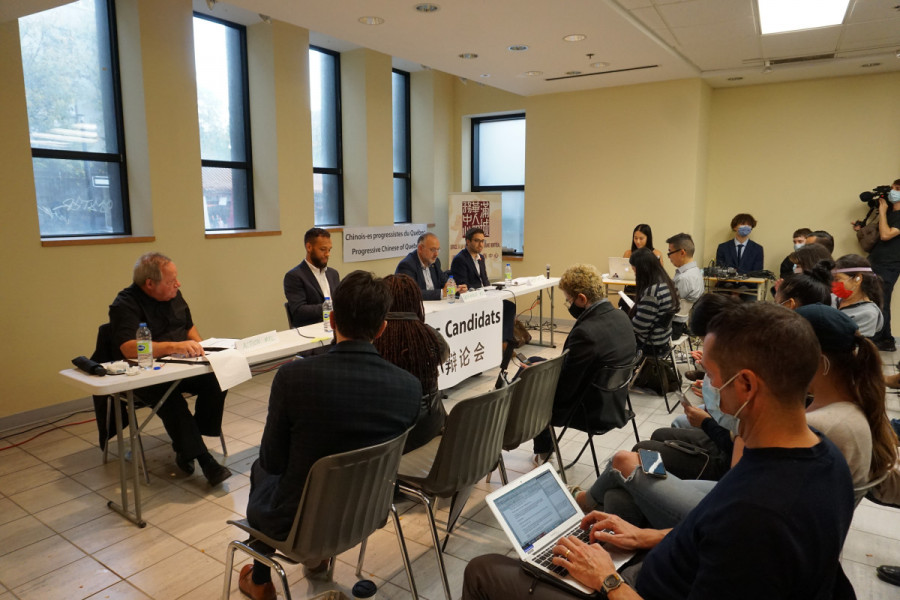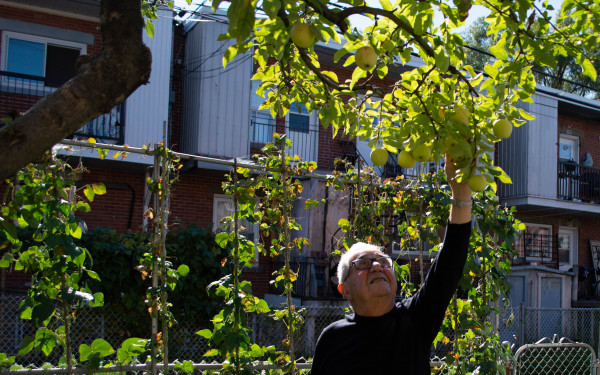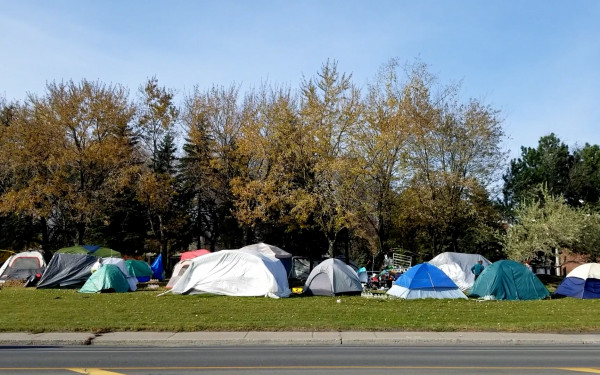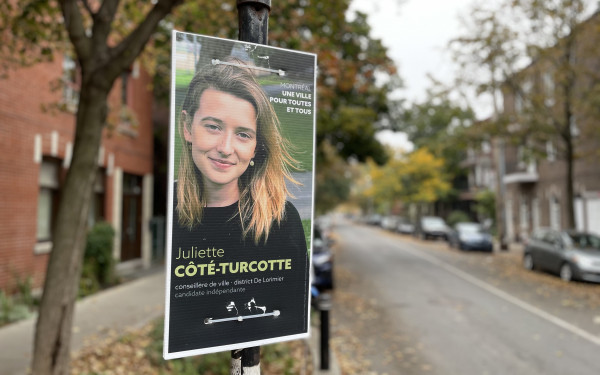First municipal debate of its kind held in Chinatown
Montreal’s municipal parties address concerns about the last remaining Chinatown in Quebec
The first ever municipal debate held in Chinatown gave residents the chance to voice their fears over land encroachment of the only remaining Chinatown in Quebec. The focus of the debate, which took place on Oct. 16, was on major issues such as social and racial justice, arts and culture, climate justice, economic development, and the protection of Chinatown.
The first ever municipal debate held in Chinatown gave residents the chance to voice their fears over land encroachment of the only remaining Chinatown in Quebec. The focus of the debate, which took place on Oct. 16, was on major issues such as social and racial justice, arts and culture, climate justice, economic development, and the protection of Chinatown.
Organized by the Chinatown Working Group, the crowd buzzed with excitement. Many residents said they feel as though the neighborhood is often overlooked, and past elections have proven no different.
“People never come to us,” said May Chiu, media spokesperson for the CWG. “They never come to us to ask us, ‘What are your issues? What are your problems? What are your fears?’ People just don’t pay attention to us because we’re a minority.”
Read more: Thousands march against anti-Asian racism and hold vigil for victims of Atlanta mass shooting
Four political parties in Montreal’s municipal election took to the stage in the Chinese Community and Cultural Center where the room hit maximum capacity at 60 people. The candidates from the four parties were Balarama Holness of Mouvement Montréal, Robert Beaudry of Projet Montréal, Aref Salem of Ensemble Montreal, and Robert Sévigny of Action Montréal—Holness being the only mayoral candidate of the four.
The debate kicked off with the topic of preserving Chinatown. Recently acquired properties by Shiller Lavy Realties alongside Ensemble Montréal’s proposal to increase the development of skyscrapers has many people worried. Since the 1970s, more than six acres of the land that once belonged to Chinatown has been demolished to develop the Palais des congrès and Complexe Guy-Favreau.
Earlier this year, Shiller Lavy purchased the neighbourhood’s oldest building: the 195-year-old Wing Building, designed by James O’Donnell, the architect behind the Notre-Dame Basilica. Shiller Lavy has a reputation for evicting and harassing tenants, giving more reason for concern over the neighbourhood’s future.
The 1970s also happened to be the same period in which the Quebec City Chinatown was destroyed to accommodate the construction of the Dufferin-Montmorency Expwy. With apt reason for concern that Montreal will follow suit, many Montrealers are petitioning to declare Chinatown a heritage site to protect it from gentrification.
“Recognizing this as a heritage site is critical,” said Holness. “During the pandemic, anti-Asian racism and hate was on the rise. There was a lack of security and a lack of comfort, so as a party, we take Chinatown very seriously.”
Read more: Rise in Asian Hate Crimes as COVID-19 Pandemic Grows
“We need social housing to bring people back to this part of the city. And we need to have some cultural events too in the city, so people can visit and they can live here in peace and harmony.” — Aref Salem
Both the Old Port and Mont-Royal landscapes have been granted heritage status to protect the character of the city. This has left many Montrealers questioning why the city has failed to do so for Chinatown, putting residents at risk of eviction and uncertain living situations due to housing inaccessibility.
Timothy Chan, an elder resident of the community, asked candidates how they intend to protect residents’ quality of life and address fears of gentrification and eviction.
“We need social housing to bring people back to this part of the city,” said Salem. “And we need to have some cultural events too in the city, so people can visit and they can live here in peace and harmony.”
Read more: Marché Asiatique hopes to lend a hand in revitalizing Montreal’s Chinatown
Chinese-speaking Montrealers make up only 3 per cent of the population of the city. Despite this, in 2006, 15 per cent of people living in poverty were Chinese-speaking.
“If you get priced out of the market, you certainly cannot live in Chinatown,” said Holness. “What we’re saying is that we are going to create affordable housing and your rent is going to be 30 per cent of your revenue. That is true affordability.”
Another threat to the community is a construction proposal for a Réseau express métropolitain train station at the corner of Réne-Lévesque Blvd. and St. Urbain St., effectively cutting off the neighbourhood.
“The REM must not be the only option because it is something that could create divides,” said Beaudry. “We must realize that we are in a city with pedestrians just like the Old Port. So, [Projet Montréal] are not going to agree to this project just so we can make a dollar. We would only agree to it if it were a justifiable function within the environment.”
A lack of greenspaces in the community has residents looking for a permanent spot for their community garden. In June, Valérie Plante announced actions being taken to add more greenspace to the neighbourhood, but there has yet to be any progress.
Read more: Dear allies of the Asian community: Bystander silence is louder than hate speech
Green Chinatown Montreal is an organization that aims to spread awareness of food security and urban sustainability. From 2010-2016, the garden was located on the property of the Montreal Chinese Hospital but has since been forced to relocate several times. After reaching out to the city on multiple occasions to inquire about occupying the space at 139 Viger St. E, GCM was declined permission to bring their garden back to the community.
“We were passed down the chain of command, so to speak, through the bureaucracy over several months,” said Bill Mersereau, the gardening coordinator for GCM. “Ultimately, we were given the reply that the property in question—although owned by the city—had been contracted as an equipment and materials storage site for Champ-de-Mars metro station’s international landscaping event.”
Mersereau said he has only seen equipment stored there once for a period of two weeks back in 2018. In 2019, the organization resumed discussions with the city but was upended by the onset of the pandemic.
Sévigny suggested closing the Ville-Marie Expwy. to make space for a park. Salem pointed out the importance of developing more green roofs in the city, using the success of Lufa Farms in Ville St. Laurent as an example of what they can achieve.
The debate left many of those in attendance feeling positive about the future. Mersereau described the event as less of a debate and more of a meet-and-greet with fellow candidates.
“What I’m happy about is that they are taking our concerns seriously,” said Chiu. “I haven’t felt that they have taken any concerns expressed by the community seriously for the longest time.”


_600_832_s.png)




